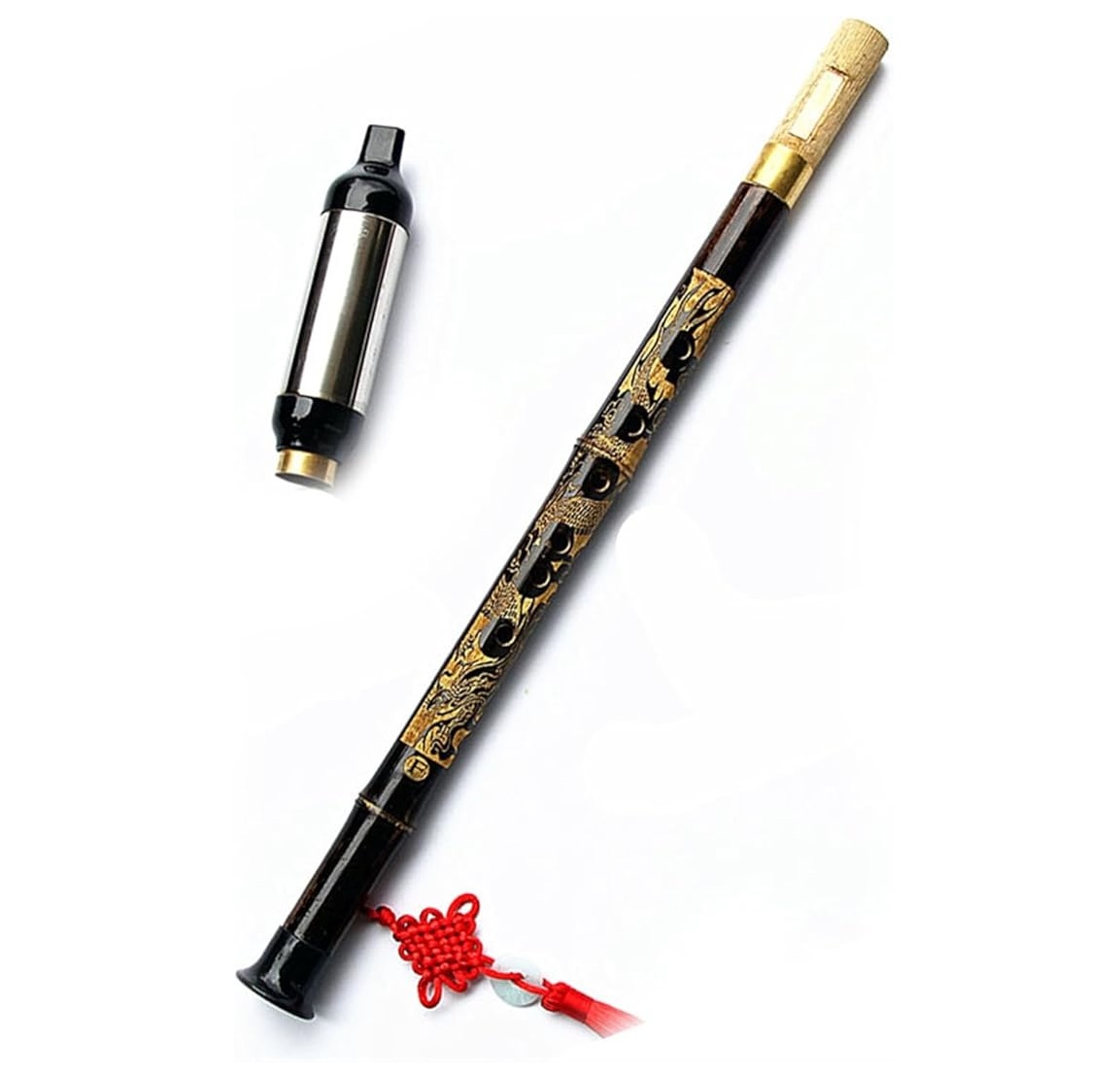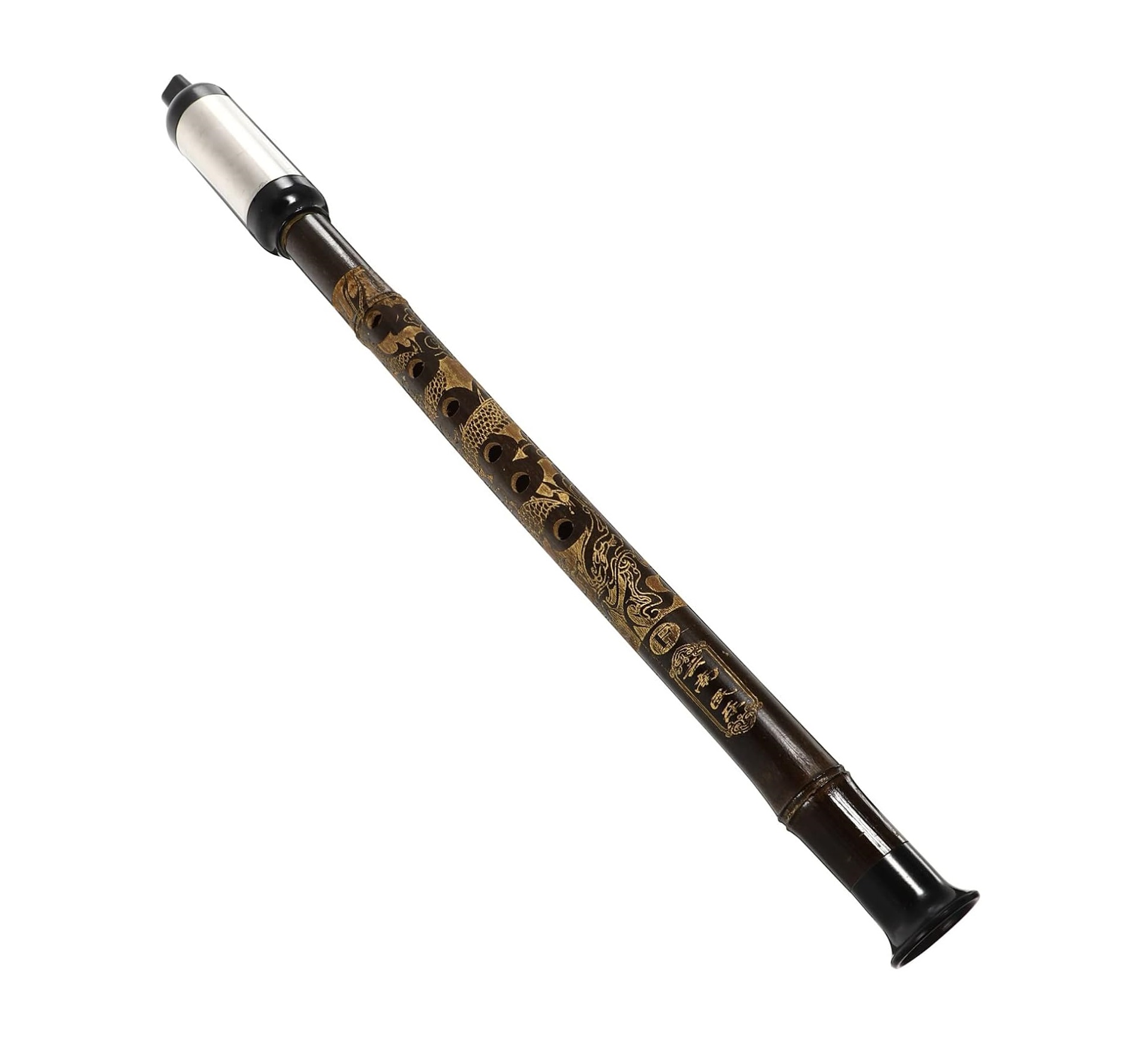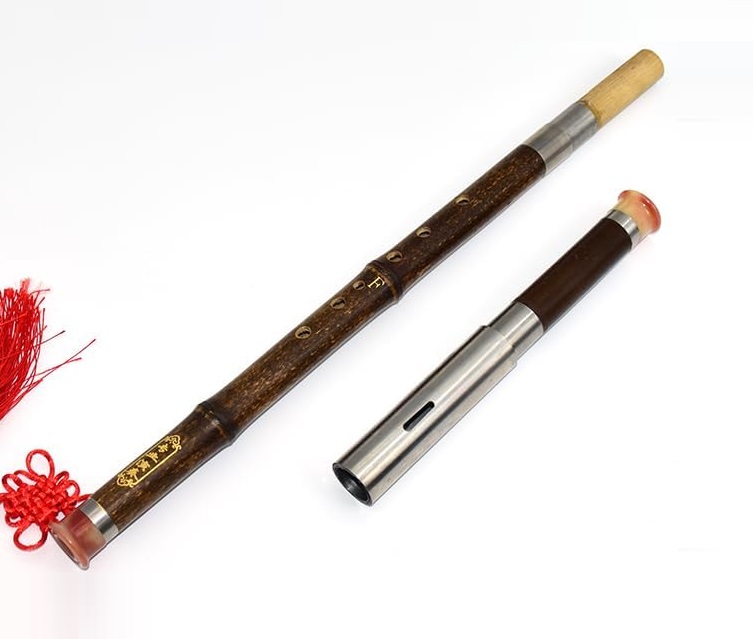Bawu
Woodwinds
Asia
Between 1001 and 1900 AD
Video
The Bawu is a traditional Chinese wind instrument that is similar in appearance to a flute but has a completely different method of sound production. Unlike transverse flutes, the Bawu is played like a clarinet or a recorder, with the player blowing directly into a mouthpiece fitted with a reed. It is a free-reed aerophone, known for its smooth and expressive tone. The instrument is commonly used in solo performances, folk ensembles, and modern compositions that integrate traditional Chinese elements.
Type of Instrument: The Bawu is classified as a free-reed aerophone, a category of wind instruments where sound is produced by air passing through a reed. It falls within the broader family of wind instruments but is distinct due to its reed-based sound mechanism. Unlike other reed instruments such as the clarinet or oboe, the Bawu does not have a complex key system, making it relatively simple to play while still allowing expressive musical interpretations.
History
The Bawu originates from China, specifically from the southwestern regions where ethnic minorities such as the Dai, Yi, and Hani people have traditionally played it. Historical records trace its origins back to at least the Qing Dynasty (17th century), though it is believed to have been in use among ethnic groups much earlier. The instrument is mainly associated with Yunnan Province but has also spread to neighboring provinces such as Guizhou and Sichuan. Over time, the Bawu has gained recognition across China and internationally, especially in contemporary world music and fusion compositions.
Materials Used
The Bawu is traditionally made from bamboo, which provides its warm and resonant sound. The body is typically crafted from a single piece of bamboo, with holes drilled into it for finger placement. The reed, the crucial component responsible for sound production, is often made from metal or thin wood. Modern versions sometimes incorporate plastic or other synthetic materials for durability and consistency. Some Bawu instruments also feature decorative elements such as intricate carvings, inlays, or lacquer finishes, adding to their aesthetic appeal.
Types of Bawu
The Bawu comes in different sizes and tunings, depending on the musical requirements and the region where it is played. The two most common types are:
Soprano Bawu – This version is higher in pitch and is often used for lively, bright melodies.
Alto Bawu – This type has a deeper, more resonant tone and is used for more expressive and lyrical pieces.
Additionally, some variations of the Bawu are designed to be played in different keys, with F and G being the most common tunings. These variations allow the instrument to be more versatile in ensemble settings.
Characteristics
One of the defining characteristics of the Bawu is its mellow, haunting sound, which closely resembles the timbre of a clarinet or a saxophone. The instrument has a limited range compared to Western wind instruments but makes up for it with expressive capabilities, including vibrato, bending notes, and glissandos. Unlike the dizi (a traditional Chinese flute), the Bawu relies on a continuous air supply to keep the reed vibrating, making breath control an essential skill for performers.
Sound Production
The Bawu produces sound when the player blows air through the mouthpiece, causing the free reed to vibrate. This vibration generates sound waves that resonate within the bamboo tube, creating a warm and rich tone. The pitch is controlled by covering or uncovering the finger holes, similar to how a flute or recorder functions. Skilled players can manipulate air pressure and embouchure to create dynamic variations, adding to the instrument’s expressive range.
Playing Methods
The Bawu is played by positioning the instrument vertically and blowing into the mouthpiece while using the fingers to control pitch and articulation. Common techniques include:
- Vibrato – Achieved by controlling the airflow and lip pressure on the mouthpiece.
- Note Bending – Done by partially covering a hole and adjusting the airflow to create pitch slides.
- Glissando – A smooth transition between notes, often used in expressive melodies.
- Tonguing – A technique to articulate notes clearly, similar to how a flute player uses the tongue to define rhythms.
Some advanced players incorporate circular breathing, allowing them to sustain notes for extended periods without interruption. This technique is particularly useful for traditional melodies that require long, flowing phrases.
Roles in Music
Traditionally, the Bawu is used in folk music, especially in the southwestern regions of China where ethnic minorities reside. It is often featured in storytelling and love songs, as its soulful tone is well-suited for expressing deep emotions. In modern music, the Bawu has been adopted by contemporary composers, often blending it with Western orchestration. It is also frequently used in film scores to evoke a sense of nostalgia or cultural depth. Additionally, the Bawu is sometimes incorporated into jazz, fusion, and world music compositions due to its unique timbre.
Cultural Significance
The Bawu holds cultural importance among various ethnic groups in China. It is often played during traditional festivals, weddings, and ceremonies. In some regions, it is associated with courtship, where young men use the instrument to express affection towards their loved ones. The instrument’s hauntingly beautiful sound is deeply connected to the landscapes and traditions of southwestern China, making it a symbol of ethnic identity and heritage.
Beyond China, the Bawu has gained international recognition among musicians who appreciate its unique sound. Many Western composers and performers have incorporated the instrument into their work, helping to introduce its distinct voice to a broader audience. Music educators and ethnomusicologists also study the Bawu as an example of traditional Chinese craftsmanship and musical expression.
In summary, the Bawu is a remarkable instrument with a rich history and cultural significance. Its expressive capabilities, distinct sound, and deep-rooted traditions make it a cherished part of Chinese musical heritage, while its growing popularity in global music circles highlights its adaptability and timeless appeal.
FAQ
How is the Bawu constructed?
The Bawu is a Chinese free-reed wind instrument made of a bamboo tube with a copper reed inside. It has finger holes similar to a flute but is played like a clarinet. The instrument often features decorative carvings and a mouthpiece. It produces a warm, expressive sound, commonly used in Chinese folk music.
Where did the Bawu originate?
The Bawu originates from the Yunnan province in southwestern China. It is traditionally played by the Dai and Miao ethnic groups in folk music. The instrument has gained popularity across China and internationally. Its hauntingly beautiful sound makes it a favorite in contemporary compositions.
What compositions feature the Bawu?
The Bawu is commonly used in Chinese folk and contemporary orchestral compositions. It is featured in pieces like "Moonlight on Spring River" and "Bamboo Song." The instrument is also used in movie soundtracks to evoke an ethnic and emotional atmosphere. Its soulful tone makes it ideal for expressive melodies.
 Links
Links
References
- Wikipedia: Bawu
- World of Musicality: Bawu Musical Instrument Facts
- Grinnell College Musical Instrument Collection: Bawu
- Sound of Mountain: Bawu Instruments On Sale
- AliExpress: Dizi - Flauta Bawu Flute F/g
- China Culture Center: Traditional Chinese Instruments - An Overview (includes information on various instruments like the bawu)
Other Instrument
Categories




















